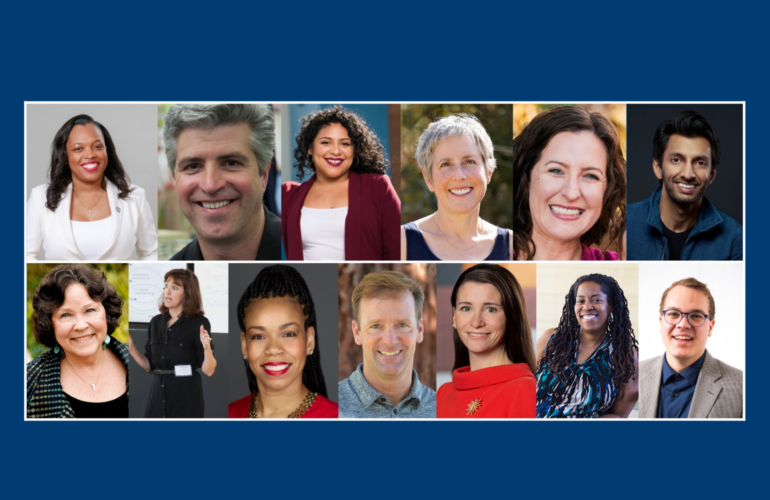No one doubts the significant impact of the global pandemic on education. It’s been two and half years of disruption, learning loss, and the recognition of inequity in the classroom. Coupled with a growing mental health crisis among children and a concern about school safety, the state of education may look dire; but there are plenty of individuals who are using this season to reimagine how children learn. These 13 innovators are making a difference.
Michael Roy
Training and Prevention Team Lead at Chicago Public Schools
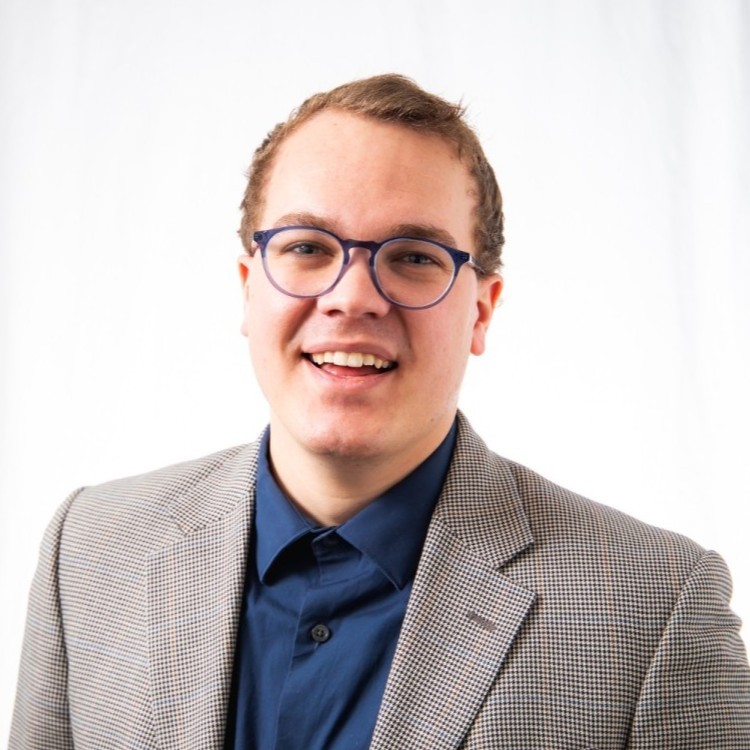
CPS Training and Prevention Team Lead, Michael Roy visited 20 school districts across the country including San Francisco, New York, Seattle, Boston, Milwaukee, and Detroit before developing the framework Transforming Bias-Based Harm for the students of Chicago Public Schools.
“The framework is about the ABCs of accountability, belonging, and consent. We want to create a better culture so we’re taking a more proactive stance, trying to reduce harassment and discrimination and really focus on youth voice and youth leadership in the prevention of bias-based behavior,” he explains.
While Roy never envisioned himself teaching in the classroom, he always wanted to work with young people and youth leadership in the education space.
“I ended up here at CPS and really fell in love with school district administration and doing programs that impact a lot of students,” he says.
“Traditionally we’ve thought about school as the place to learn math, to learn grammar, to learn the very back-to-basics things; but now students can learn more competencies – how to be an active citizen, how to take care of themselves, and how to take care of other people. They’re learning how to contribute and how to be ready not just for college, but for life. It’s a reframe for what it means to engage in a school community, and it impacts learning.”
Roy points to the importance of addressing mental health for all members of the school community.
“If our mental health is not in a good place, we want to be able to rely on systems and support in the school building to help get us into a better place where we can enjoy the full benefit of being a part of the school community and contribute to that community,” he says.
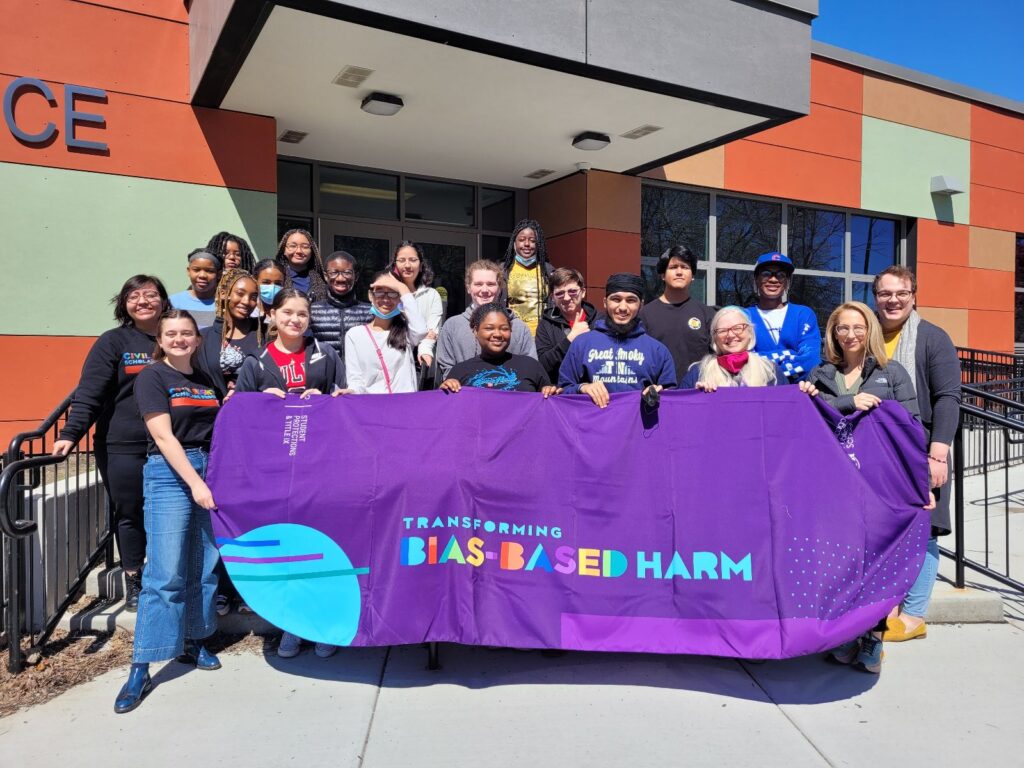
About 343,000 students are enrolled in CPS in 100 buildings across the city.
“Our young people face a lot of trauma,” says Roy. “We have a high poverty level here in Chicago. It’s a city that has historically been segregated; however, our kids are also incredibly resilient. There’s a lot of strength. It’s been beautiful to watch these young people stand up and speak out about creating a better school district and a better Chicago. It’s incredibly rewarding to watch them light up in the prevention programming that we do.”
Jody Lewen, Ph.D
Founder and President, Mount Tamalpais College
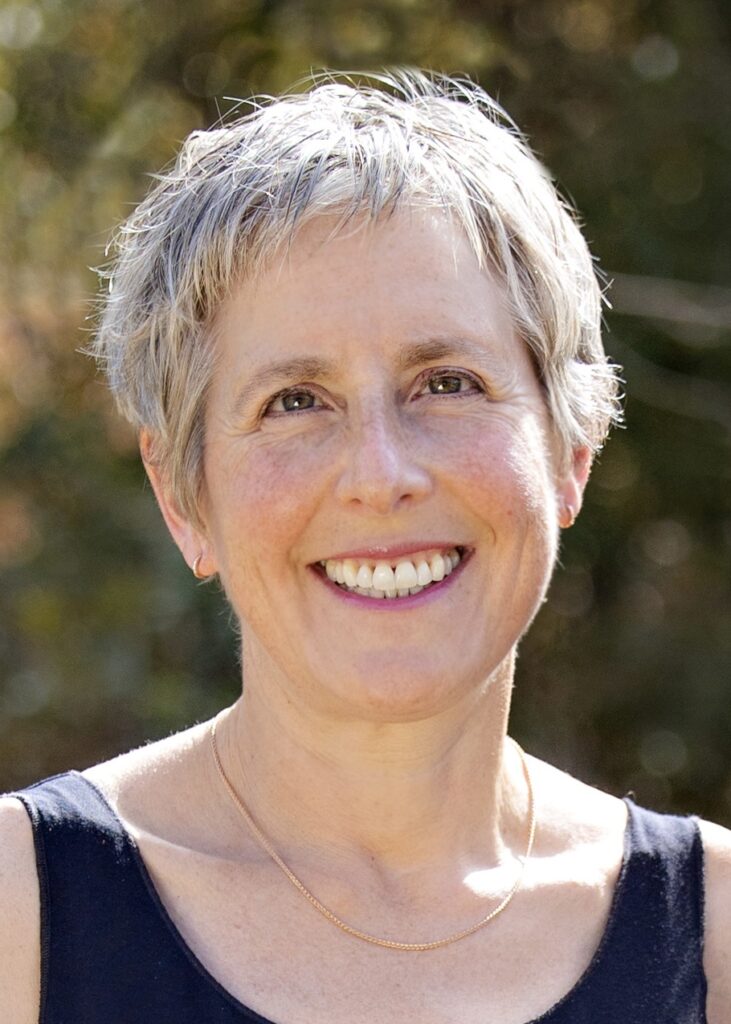
Jody Lewen, Ph.D first entered San Quentin prison in 1999 as a volunteer instructor in an educational outreach program to inmates. As a graduate student in the Rhetoric Department at UC/Berkeley, Lewen was teaching classes on campus and working on her dissertation. “I started teaching at San Quentin out of interest and excitement at the idea of being able to deliver quality education to people who didn’t necessarily have it, but it was something to do on the side,” Lewen recalls. “My plan was to finish my dissertation and go into the conventional job market. Then I fell in love with the program and got very engaged.”
When the program coordinator announced he was leaving and no one stepped up to keep it going, Lewen decided to take over.
“I saw how little anybody cared what happened to people in prison,” she says. “That’s a precarious situation for any group of humans. “
She wondered what the program could become if there was enough manpower and resources and decided to found the nonprofit, Prison University Project, to raise funds for expansion. As more inmates enrolled in classes, the Prison University Project became the infrastructure for a robust academic program offering a general education Associate of Arts degree and intensive college preparatory courses. In the past two decades nearly 4,000 students have participated.
Recently the Prison University Project became an accredited independent liberal arts college renamed Mount Tamalpais College.
“We’re letting people who have been marginalized, degraded, and left for dead know that somebody does care about them,” says Lewen.
“I derive so much satisfaction from feeling useful. Seeing the good we can do just by showing up and taking the time to give our students a high-quality education – that’s fuel for me.”
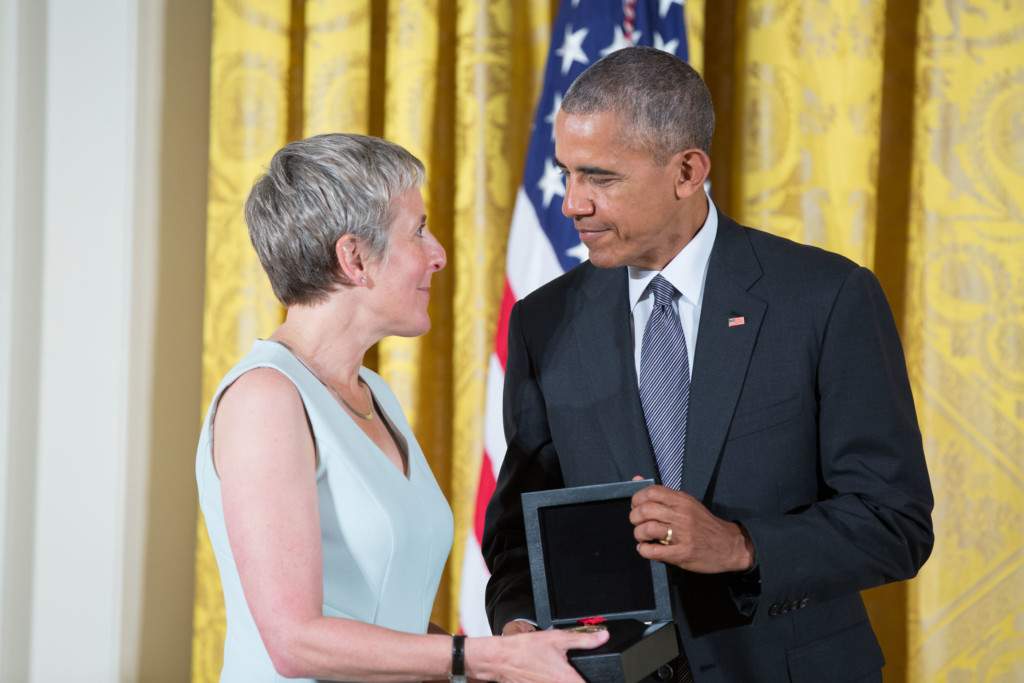
Lewen is the recipient of the National Humanities Medal, the James Irvine Foundation Leadership Award, and the Peter E. Haas Public Service Award.
Jennifer Reid Davis
Head of Strategy & Equity of Noble Schools

Jennifer Reid Davis’s passion for education was ignited in her youth when her mother told her, “No one can take your education away from you.”
After graduating from Spelman College with a Bachelor of Arts in Psychology, Davis received an M.S. in Education Administration from the University of Pennsylvania. She is currently a Doctoral candidate in Diversity and Equity at the University of Illinois Urbana-Champaign.
It was during her years at Spelman that Davis decided on her career path.
“I can tell you without equivocation or argument that going to Spelman was for sure the best thing I did,” she says. “It changed the trajectory of my life and is one of the reasons I went into education – because of how education changed my life. It’s personal to me.”
In 2007 Davis joined Teach For America and went to a school in Houston, Texas, where many of her students had been displaced by Hurricane Katrina. This first experience in a classroom helped Davis decide to become a school principal.
“I knew then that I wanted to be a principal because I could just see how much impact my principal was having over our school,” Davis says. “Sometimes, it was for the better, and sometimes it wasn’t. If the kids were bad, the principal would change their lunch options, and they wouldn’t get to eat hot lunch. They would only give the kids cold lunch options.”
Davis, who was born in Chicago, returned to the city in 2010 to teach at Rauner College Prep, one of the 18 Noble Schools charter schools serving over 12,000 students in Chicago. Three years later she was named Rauner College Prep principal.
Recognizing the importance of identifying Noble’s diverse pipeline of emerging talent, Davis founded the Diverse Leaders Fellowship that combines in-person training with mentorship and access to senior leaders. Recently she was named Head of Strategy & Equity of Noble Schools.
“My vision for Noble is that we become a model for how you run and build antiracist schools for Black and Brown babies,” Davis says. “I am excited about what it really means to realize our commitment to anti-racism and to support our Schools team and our President in building an antiracist school district from top to bottom.”
Glen Tripp
Founder and CEO, Galileo Learning

As a student, Galileo Learning Founder and CEO Glen Tripp appreciated a traditional academic education in a traditional classroom. Yet he recognized that doesn’t work for every student. He built Galileo Learning’s camps on the premise that hands-on, project-based learning has the potential to bring meaning to a child’s education in a transformative way.
Tripp explains how two experiences in high school influenced the development of Galileo Learning.
“I was the editor of the school newspaper in 1986 when we transitioned from traditional publishing to desktop publishing,” he says. “Working together with a group of motivated peers who wanted to use new technology to publish a quality newspaper was transformative for me. It taught me how much one can learn when you’re engaged in projects that are meaningful to you.
“At the same time, I was in Boy Scouts with a Scout Master who believed that kids should run the troop. It was so incredible as a young person to have adults believe in you and empower you to be the ones in charge of the program.
“I learned through these experiences how joyful, fun, stimulating, and inspirational it is to come together with a group of people and create something that you care about. Experiential education and project-based learning are so effective for so many kids in a way that traditional classroom learning will always pale in comparison.”

Since its founding in 2001 600,000 students have attended Galileo programs. More than 2,500 Galileo educators serve over 50,000 kids annually at 67 sites across the country. The project-based science, arts, technology, and engineering experiences have been influenced by the Institute of Design at Stanford University and the Tech Museum of Innovation in San Jose.
When Tripp, a graduate of Stanford, reflected on his own education he realized that while math and reading are foundational skills every student needs, there’s so much more to learn. “I believe creativity and innovation are going to be the most valuable skills in the next phase of our world’s development.”
He’s hopeful more educators will move beyond traditional teaching methods and implement more project-based learning. “There’s an energy when kids and adults pull in the same direction in a supportive environment. Learning can be joyful, meaningful, and fulfilling.”
Danish Kurani
Architect & Founder, Kurani

Danish Kurani, who has designed more than 100 educational spaces around the world, does not agree that schools become safer when buildings are hardened. He believes open, inviting spaces provide more security.
“Architecture’s role in education isn’t to isolate or shield; it’s to make schools fertile ground for personal growth – places that foster social, psychological, and emotional development,” he explains. “We need to soften the school’s boundary, making it more accessible and connected to people. Schools can and should be the heartbeat of the community. If we invite more adults on campus, it actually becomes a safer place.”
Although he’s designed many different types of structures, Kurani has focused on creating learning spaces since he opened his firm 10 years ago. His work includes Khan Lab School, Acton Academy East Bay, Black Girls Code, and Google Code Next Lab. Kurani considers the school environment the missing link in the effort to improve education.
“There are so many smart, dedicated people trying to cook up this meal called education. They’ve got all the ingredients, but they’re forgetting the pot – the space. We can’t make the great meal called education unless we’ve got the pot where all these things mix well.”
Kurani emigrated from Pakistan to Georgia with his family when he was 3 years old. He chose architecture as a way to solve global problems. While pursuing his Masters in Architecture and Urban Design at Harvard University, Kurani partnered with Ph.D. students at the Harvard Graduate School of Education and Boston Public Schools on his thesis and recognized that education was the most proactive way to address universal concerns.
His design process always focuses on the student experience. “We have to arrive at the design by first thinking critically and deeply about the experience we’re trying to create,” Kurani says. “What will learning look like day-to-day, week-to-week, month-to-month, semester to semester? ”
Kurani talks with all the stakeholders including administrators, teachers, and students. “The process helps everyone think carefully and deeply about the student experience,” he says. “We’re choosing to work with partners who are trying to shake up education and do things differently. It’s been great to see the impact.”
Heather Y. Anichini
President and CEO, The Chicago Public Education Fund

For more than twenty years the Chicago Public Education Fund has invested millions of dollars in Chicago’s public school leaders. President and CEO, Heather Y. Anichini explains, “We see our job as equipping principals and their teacher teams with the tools that enable them to get really clear on what their students need, what their approach is going to be to meet those needs, how to know if that approach is working, and where to potentially adjust.”
The Fund raises 7 million dollars annually to support three areas: programming, policy, and professional leadership. “Seventy percent of the principals sitting in Chicago’s public schools – district and charter – have been supported by a Fund-sponsored program on their leadership journey,” Anichini reports. “Right now, we’re working with 350 educators.”
Summer Design, one of the Fund’s signature programs, has been a major source of innovative thinking across the city for the last nine years. “Using design thinking principals and their teacher teams engage in the empathy process to identify the innovations they hope to implement in their schools,” says Anichini. “We launched this in 2013 with 13 principals. Last year it served over 100.”
Other programs include a fellowship in partnership with Northwestern University for top-performing principals that develops executive leadership skills and the University of Illinois, Chicago’s nationally recognized Principal Prepared Program. “We want to ensure that there is a great, strong, diverse pipeline of people coming into leadership here in Chicago.”
As principals gain expertise, they share what they know through the Fund’s professional learning communities. “Our dollars go to principals across the city who share their expertise with other leaders on how to manage executive leadership time, how to engage with parents, how to manage local school councils, and how to think about equity in leadership,” says Anichini.
She’s frustrated by the narrative around public education right now. “It’s consistently negative, but my experience in public education is consistently positive. Every day I see school leaders and their teacher teams working incredibly hard through real adversity and challenge. All across Chicago and all across the country there are kids and adults working together to do really magnificent things around teaching and learning,” Anichini concludes.
James Hughes
Director of Community Action, English Teacher, Marin Academy
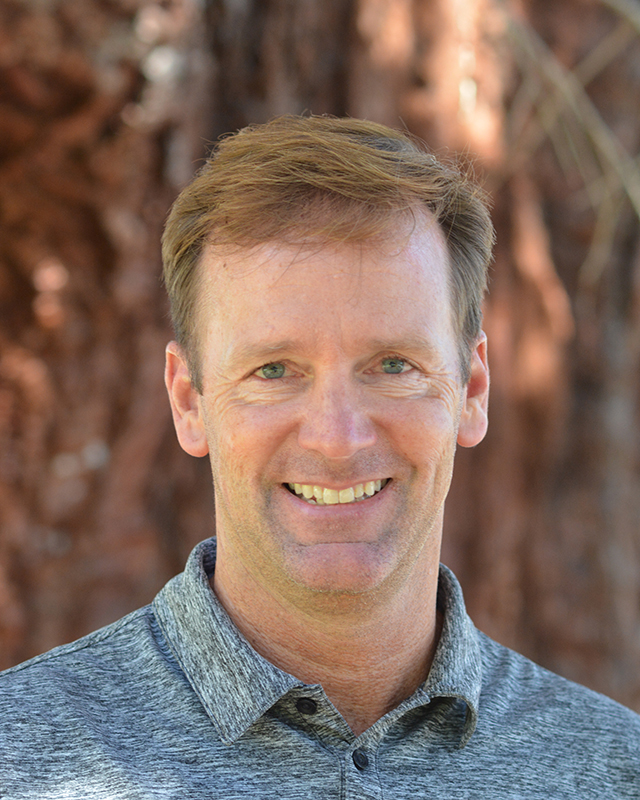
When the 10th grade students in James Hughes’s English class at Marin Academy read Gabriel Garcia Marquez’s Chronicle of a Death Foretold they learn more than just the novella. “This story focuses on a sense of community responsibility,” Hughes notes. “It’s a great opportunity for us to explore what our responsibility to the community is.”
Hughes is entering his fifth year as an English teacher and Director of Community Action at the independent school in San Rafael. “I chose to come to this school because it’s pushing the boundaries of education beyond the traditional four walls of a classroom,” he says. “We’re connecting kids to the community and that’s so rewarding.”
After reflecting on the content of the book, the sophomores learn about different local organizations where they can volunteer to meet needs in Marin County. Hughes explains, “It’s about thinking deeply and then getting experience by going out in the community to work with groups like City Impact or support homeless women who are under-resourced.”
While much of MA’s service learning is rooted in academic courses and classroom work, the school’s mission to think, question, and create in an environment of encouragement and compassion leads to more far-reaching programming. Hughes oversees the Community Action Leadership Council, led by sophomores, juniors, and seniors with a desire to broaden the school’s social impact on the community, the Youth Grants Board, which awards funds to other area schools engaged in service, and the Conference on Democracy, an annual one-day event that brings local, national, and global luminaries together to share their professional perspectives and personal experiences.
“Students at independent schools have incredible opportunities and resources,” says Hughes. “I want to help them think deeply about how they access and harness those opportunities to make an impact in our world. Understanding social justice, racial justice, and systemic inequities is so essential. To see the students grow into incredibly responsible, community-aware, active young adults – that’s what motivates my work.”
Nichole Pinkard
Founder, Digital Youth Network
Associate Professor, Northwestern University
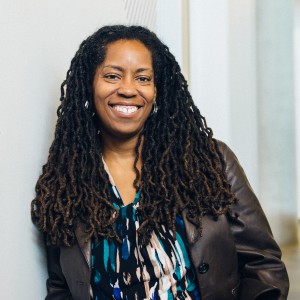
While many consider inequity in STEM education a chasm between boys and girls, Nichole Pinkard, Ph.D. sees the divide between whole communities.
“It’s hard to look at interest for underrepresented youth in coding or making, because they’re not surrounded by opportunities to engage in those things in the same way that they are surrounded with sports,” says Pinkard, the founder of Digital Youth Network and an associate professor in the School of Education and Social Policy at Northwestern University. “Even if a kid on the South Side or West Side of Chicago doesn’t have an interest in playing basketball, they constantly come in contact with basketball. Every kid makes a decision around sports because it’s in their environment. With STEM, we can’t say they don’t have an interest if they don’t have an opportunity.”
Pinkard found her passion for technology early. “I was fortunate to have opportunities both in school and out of school to engage with technology,” she says. For me it was just a place to play.”
As a researcher, Pinkard wanted to examine what in her environment led to her love of computer science. “I was trying to understand why I, as a young African American girl from Kansas City, Kansas, ended up exploring and really becoming passionate about computer science. Did it just happen, or was there something in the environment?”
She discovered that out-of-school opportunities to explore STEM were critical and has set out to develop more for underrepresented youth. She explains, “Outside of school is that space for exploration. I see myself as an ecosystem designer creating environments that are reliably producing underrepresented youth who are engaged and motivated in STEM.”
Among the projects Pinkard has designed are Remix Learning, an online social learning networking platform that enables youth to produce and consumer digital media, Digital Youth Divas, an out-of-school program that engages middle school girls in design-based engineering and computer science activities, and YOUmedia, co-founded with Chicago Public Library and supported by the MacArthur Foundation.
Pinkard is the recipient of a 2014 Northwestern Alumni Award, a 2010 Common Sense Media Award for Outstanding Commitment to Creativity and Youth, and the 2004 Jan Hawkins Award for Early Career Contributions to Humanistic Research and Scholarship in Learning Technologies. She is an NSF Early CAREER Fellow, and a grant recipient of the John D. and Catherine T. MacArthur Foundation.
Denise Pope, Ph.D
Co-founder, Challenge Success, Senior Lecturer, Stanford Graduate School of Education
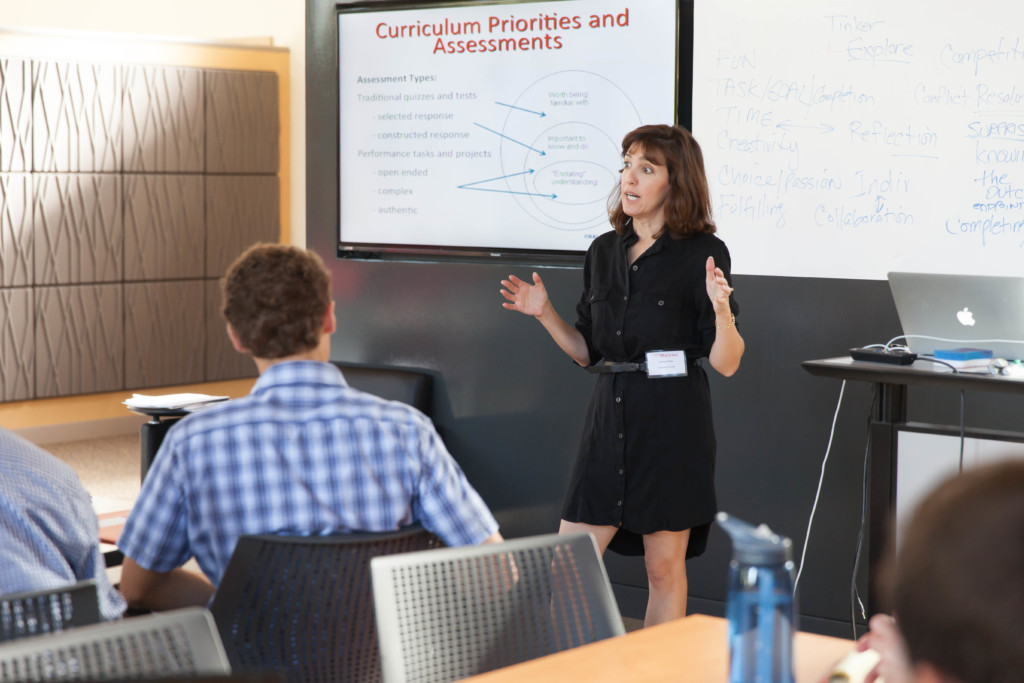
Denise Pope, Ph.D is hopeful about the future of education because of the students. As co-founder of Challenge Success, she meets a lot of them. “The students I talk to want to make changes,” she explains. “They are articulate. They are thrilled to have adults listen to them.”
At the same time, Pope acknowledges there’s a lot that needs fixing. “Right now, it’s mental health – stress, isolation, suicide ideation, anxiety, and depression. Of course, we want schools to hire more counselors, but we need to look at the systems level to find solutions. What about the policies and practices is not allowing kids to thrive, be healthy, or feel like they belong?”
Challenge Success has worked with educators, students, and parents at more than five hundred schools around the country to transform the student experience. “We help schools rethink what they’re doing to promote whole child wellness, real engagement with learning, excitement about coming to school, and joy,” she says.
As a student Pope loved school. She became a high school English teacher because of the positive relationships she’d had with her teachers but found that her students were not as engaged in learning as she had been. “It really was not their fault. A lot of things about the system weren’t working.”
This classroom experience spurred Pope to enroll in Stanford Graduate School of Education to figure out how to engage students more deeply. For her dissertation she shadowed five students at a high achieving suburban high school near the campus. “I thought I was observing a model school. What I found was students going through the motions, doing school like these little robots. They were stressed, getting ulcers, cheating, not sleeping. Even the adults were stressed. This model school was not producing kids who would thrive in college and beyond.
“I was just ringing an alarm bell, but when my dissertation was published the head of the Health Center at Stanford told me that students coming out of this type of school end up in health centers,” she said. “They asked me to create an intervention based on my research.”
It became the foundation for Challenge Success. Pope says there is no one-size-fits-all answer, but Challenge Success is helping make policy and program changes one school and one district at a time. ”This kind of change process is slow and laborious, but it’s sustainable.”
Trisha Garlock
President, SchoolsRule-Marin
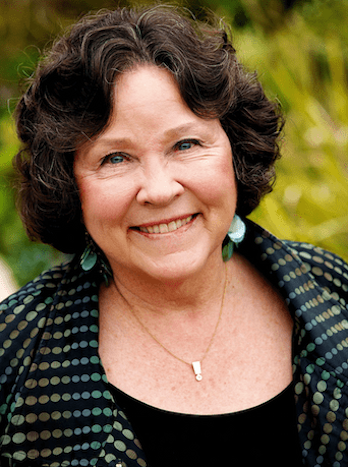
In 1981 Trisha Garlock and her neighbor Penny Weiss started the foundation Kiddo! to support art and music programs in Mill Valley’s public schools. They thought they’d be out of business in five years. “The state was cutting school budgets because of Proposition 13, but we thought surely, they would go back and realize their mistake and begin to fund schools properly again. It’s been 40 years and they still haven’t come to that realization,” says Garlock.
While Kiddo! was successfully raising funds for Mill Valley schools, Garlock realized students in the rest of Marin County did not have access to similar opportunities. “These programs are important,” she explains. “If we worked together through the entire county, we could support all the kids, not just those in our district.”
She retired from her position at Kiddo! in 2011 to join the newly formed SchoolsRule-Marin, a consortium of all the school foundations in Marin County, as the volunteer Board chair. SchoolsRule-Marin supports four program areas: literacy, the arts, technology and health. “We set broad parameters and let the school foundations decide what programs they feel are the most needed for their students,” she says.
When the pandemic brought to light classroom inequality in one of the wealthiest counties in the country, SchoolsRule-Marin shifted focus to closing the achievement gap. “There are real pockets of inequality in our community we need to address,” Garlock says.
SchoolsRule-Marin now funds an instrument rental scholarship program in Mill Valley and college counseling for students in San Rafael who cannot afford the service. They’re providing resources for Shoreline Public Schools to purchase books that reflect diversity and financing success centers for at-risk youth at Redwood and Tamalpais High Schools.
Garlock is excited about the wellness centers SchoolsRule-Marin supports at three area high schools. “These wellness centers are extremely important in this post-COVID period because kids are suffering emotionally, and they need a place to go for support where they feel safe,” she says.
Only 20% of Marin County’s residents are school-aged children, but Garlock believes. “We have a collective responsibility to ensure that all schools have the resources they need to fully meet the needs of all their students.”
Dr. Janice K. Jackson
CEO, Hope Chicago

After twenty-two years at Chicago Public Schools, seven as the CEO and Chief Education Officer, Dr. Janice K. Jackson decided to make a change. “Like everybody else, I reassessed during the pandemic,” she explains. “I thought it was time for new leadership at CPS and I was ready for something different.”
That something is Hope Chicago, a nonprofit start-up providing scholarships and wrap-around services to CPS graduates so they can attend college debt-free. Unlike many scholarship programs that only provide tuition, Hope Chicago covers all expenses including room and board, books, and fees. Students also receive an annual stipend. The organization raised 40 million dollars in their first six months, about 70% of obligation to cover the cost of college for the 900 eligible students from five CPS high schools. Hope Chicago is partnering with all state institutions in Illinois, all city colleges in Chicago, and three private schools.
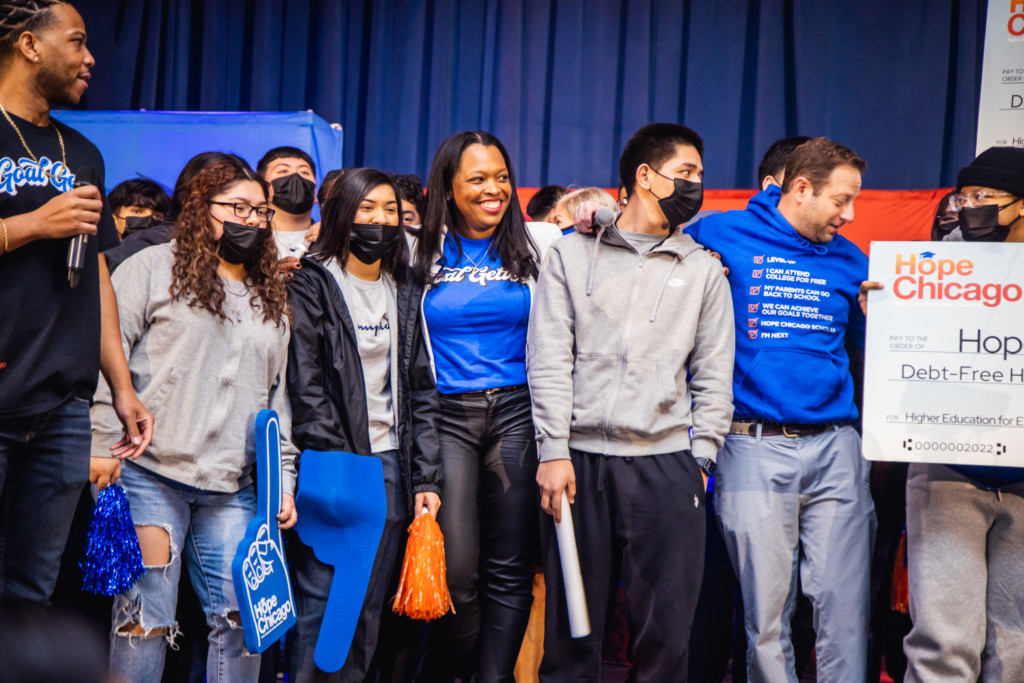
Historically 66% of CPS graduates go on to higher education. Jackson estimates that by removing financial barriers, even more students will attend. “We pay the full cost of attendance, but that’s not all that makes us unique,” says Jackson. “There is no GPA requirement for Hope Scholars. We’re trying to figure out what it takes to get a student through college if they didn’t have a stellar high school career. If you’re a kid with a 2.0 GPA it’s more likely you won’t receive any scholarship support.”
Once on campus, each Hope Scholar connects with a campus contact who helps them get all the resources their university offers. Those contacts also share data with Hope Chicago about how students are performing. “That gives us early warning indicators if kids are going off track,” Jackson explains.
Recognizing the importance of parent support, Hope Chicago also encourages parents to pursue higher education themselves. “The thing I’m super excited about is for the parents to take advantage of the opportunity to go back to school,” says Jackson. “For a parent to become a Hope Scholar, their child has to be enrolled as a full-time student. We think that stickiness between parent and child will bring success to both.
“This work of providing college access, college affordability, and support to help kids make it to and through school is special to me,” says Jackson. Obviously as Superintendent you impact more students because of the position, but you don’t get to have close relationships. I missed the opportunity to engage with students and families – to hear their stories and really understand why this work is so important. That’s really rewarding for me personally.”
Pam Lamcke
Executive Director, Marshall Teacher Residency

As executive director of the Marshall Teacher Residency at Summit Public Schools, Pam Lamcke designed a program to answer the question, what would learning look like if we could train teachers from the beginning of their careers to take a different view of the classroom? “The way school has looked for a hundred years isn’t working anymore,” says Lamcke. “We started this program because we recognized a need for teachers to come into school with a less traditional mindset. We don’t believe in the one-size fits all classroom. We’re focused on personalized learning.”
Lamcke, who earned a Master’s in Education and a teaching credential from Stanford University and a Master’s in Educational Leadership and an administrative credential from the University of California, Berkeley brought more than 15 years of experience to her role training novice teachers. She developed the Residency in coordination with the Stanford Center for Assessment, Learning and Equity (SCALE) to include classroom practice, collaboration, and mentorship.
“I know every one of the 122 teachers who have been through the program,” Lamcke reflects. “Knowing where these teachers started and what their values are, I really trust the future of education in their hands.”
Ninety percent of the first cohort of 24 teachers just completed their fourth year in the classroom. That rate of retention is higher than the national average. “We designed this program as a residency model because there’s a lot of research that tells us time spent apprenticing with an experienced teacher leads to stronger retention in the field,” Lamcke explains.
Like many educators, Lamcke is not only concerned about the shortage of teachers, but about the diversity of the teaching force. “The majority of teachers in the United States are white women, especially in California where our student population is different than that. We intentionally designed the Residency to consider how we can recruit, train, and retain diverse teachers across all different demographic markers.
“For me, focusing on the next generation of teachers is the most important thing we can do. They not only are going to impact the students they have in front of them today, but over the course of their careers, they’re going to have a broader influence as school leaders and policy makers. That’s why we’re investing in them.”
Samantha Ramirez
Senior Program Coordinator, Youth Leadership Institute

When San Rafael named Samantha Ramirez its 2022 Citizen of the Year, they recognized the impact of her work with students throughout Marin County. As Senior Program Coordinator with Youth Leadership Institute (YLI), Ramirez coordinates the Marin County Youth Commission. YLI is a statewide organization empowering middle and high school students to make changes in their communities. Ramirez explains, “We uplift young people and help them use their voice. I’m the adult who guides and supports them so that their dreams and ideas can become a reality.”
A life-long Marin resident, Ramirez served on the Commission when she was in high school. “I remember feeling a little bit othered,” she recalls. “Marin has a lot of tricky dynamics because of race and because of class, so for me as a woman of color from a working-class background I feel that it’s important to create spaces where we are being inclusive of all young people.”
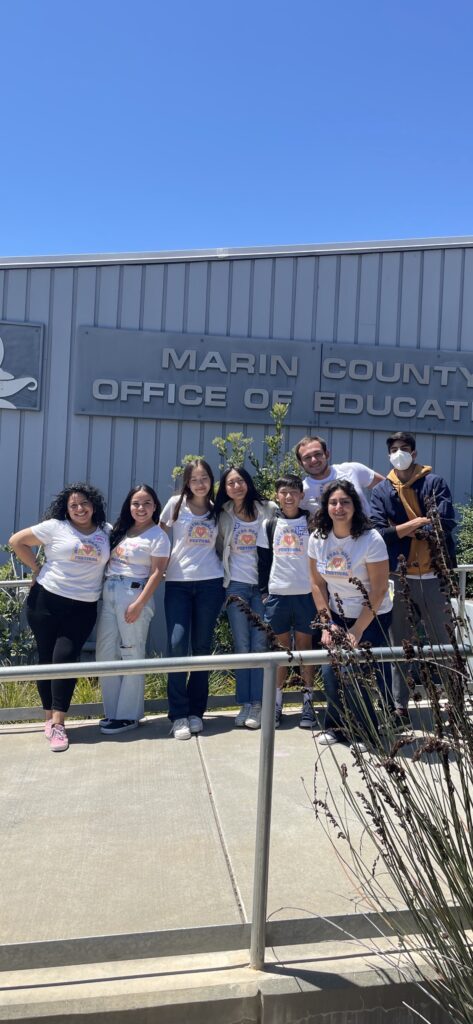
In 2020, Ramirez ran for office for the San Rafael Board of Education. It was not a successful campaign, but she says it opened her mind.
“We have a situation in Marin with some school districts that are majority students of color, but we desperately lack representation in leadership,” she says. I put myself out there and made that a topic of conversation.”
She’s put political aspirations behind her preferring to work directly with students she can mentor. “The young people I work with make me extremely hopeful,” Ramirez says. “They are so kind and caring and they have strong opinions about things. I wish more adults would work with them; they’re totally capable.”
Recognizing that change takes time, Ramirez is willing to keep trying. “All my lived experience is here in Marin County. I’m trying to do the best I can to facilitate change. It’s hard, but I’m seeing the impact on my young people. I’m seeing how they connect with me, how they nurture each other. I’m seeing a lot of success.”
In addition to her work with YLI, Ramirez serves on the Board of Community Action Marin.
More From Better
- Mental Health Matters: Why Your College Student Should Get to Know the Campus Counselor
- Can I Take Credit for my Kid’s Success? Mother of 5 Gets Real About Nature Vs. Nurture
- Abbey Springs in Fontana, Wisconsin Reawakens Thanks to Bold Renovation Project
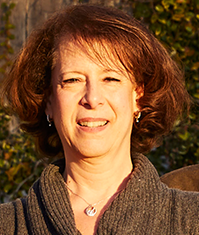
Susan Solomon Yem is an internationally published writer specializing in family, education, and women’s issues. Throughout her career she has focused on families, but her own five children are her biggest priority.
